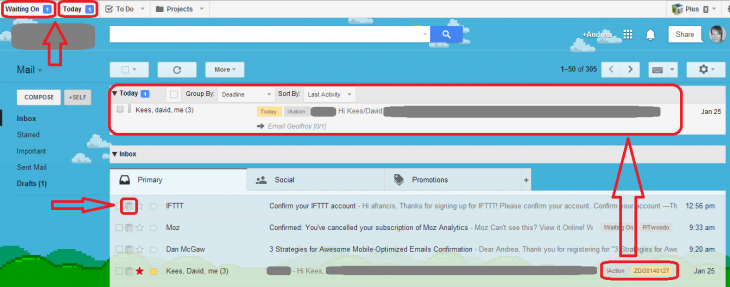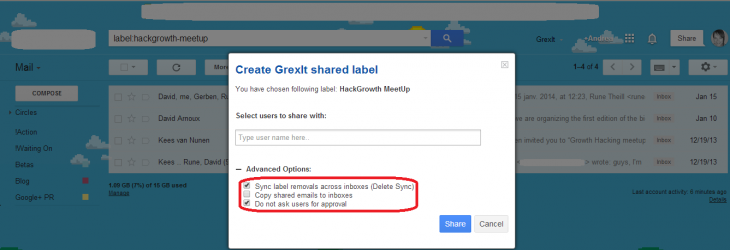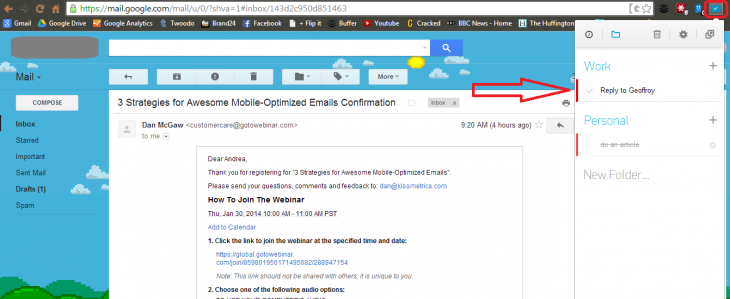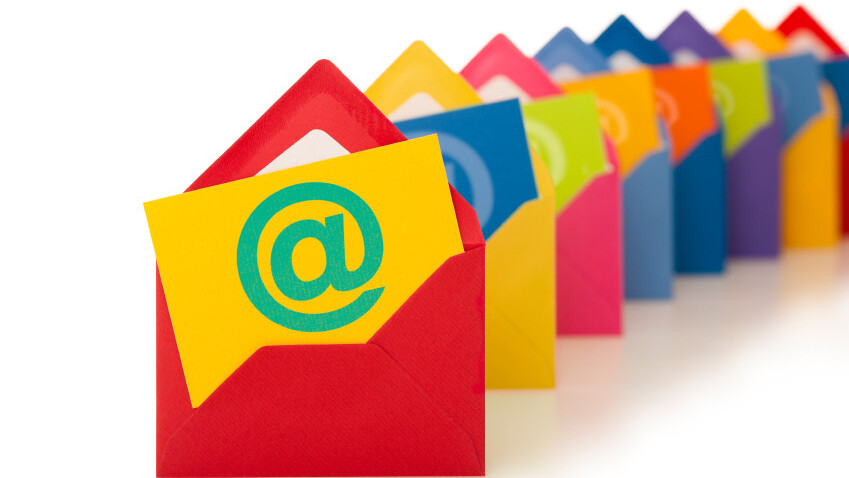
Denis Duvauchelle is the CEO and co-founder of Twoodo Mail, helping your team collaborate effectively with email through #hashtags.
Email is arguably one of the greatest things the Internet made possible.
As with all huge innovations, no one could have predicted how email was going to be used in the future. What began as a messaging service has now become a document exchange point and archive for 76 percent of people.
“We asked respondents to list the tasks they use e-mail for. Note that communication between individuals—the original intent of e-mail—isn’t even listed in the top five activities,” Harvard Business Review states. “A third of users find email search to be time-consuming and difficult to navigate. Average time to locate a document in email is two minutes.”
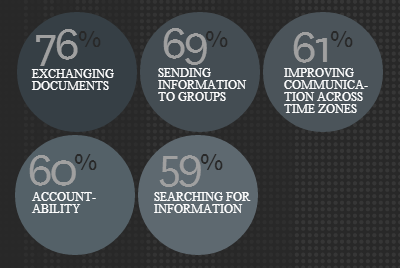
So what has gone wrong with email? The fact that we are trying to use it for everything. It’s ironic that the task we use email to do most is the least streamlined, and consumes a huge amount of work time.
What email is truly being used for now is collaboration. However, the tool has yet to catch up with this development. Extensions and plugins are frequently being installed and combined by users looking for the best solution to their collaborative problems. The “collaboration tools” segment of the SaaS industry has skyrocketed as a result.
However, email is so deeply embedded in our psyche that encouraging people to convert to a new form of collaboration tool is deeply challenging.
Is the only remaining solution to develop email into a more intuitive and pragmatic tool? Let’s take one of the most famous and most disruptive email client as a case in point.
Gmail
Google’s email service is now 10 years old – yes, released in 2004 when everybody thought that it was silly to compete with Yahoo! and Hotmail.
We all know the state of affairs now.
Gmail has reiterated many times over the years to optimize its simple usefulness, like all Google products. Along with that have come helpful extensions and plugins that make your Gmail experience better.
Twenty years ago, an email inbox was not a huge problem. Nowadays, it is a common complaint as to why employees are so unproductive and why on your “off hours” you are still, in fact, working. Smartphones have given us 24/7 email access – both a blessing and a burden.
My personal favourites (extensions and features) for Gmail inbox management are as follows:
- Yesware – check if your emails have been opened and replied to
- Rapportive – scrape information about the people who have sent you emails
- Boomerang – rescheduling and reminding service for email
- Gmelius – reorganize your gmail inbox to have the features you actually want
- IFTTT – “if this, then that” – have your own preferred synching set up between programs
- Labels and stars system – basic “filing” of emails
- Canned responses – common email replies stored for quick sending
- Add to calendar – appointment management
- Add a todo – open a window in Gmail and add a tick-box todo
- Kloudless – save and move attachments to Dropbox, Box, Google Drive
Not the most surprising list to be sure, but extensive nonetheless. I take 10 extensions/features in order to manage my inbox info. Doesn’t that seem a little much after 10 years in the making?
Whilst there are a lot of options for after you have received an email – categorize it, reply to it [later], add yourself a task, send the attachment somewhere – there is still no way for you to send actions to the recipient and track if they get it done.
Yesware partially helps in this respect, by telling you if someone has opened and replied to your email. But you have no control over the tasks mentioned. You can tell yourself the tasks to do, but you can’t tell someone else what to do.
Alternatives for Gmail management
Active inbox for Gmail
ActiveInbox gives you the ability to add actions for yourself within an email. You can assign a to-do and add it to a project folder and add a due date. On the day it is due, the email is extracted from your inbox and placed at the top with the to-do you added visible under the subject line.
Also, you can add to-dos by clicking on the box icon to the left of the email subject line. A drop-down menu appears, allowing you to add tasks whilst staying in inbox view. A summary of all your tasks, and those that are due today, are listed in the top-left corner of Gmail.
After a two-week trial, ActiveInbox costs about $40 a year.
Grexit lets you share labelled emails with others, write notes, and follow the notes others leave on the labelled and shared emails. This only works when others also have Grexit accounts.
The Any.Do extension is a fairly simple to-do list. It is compact, existing only as an extension icon in the top-right corner. Click it whilst you are in the inbox or in the email view, and type a task. Add a due date from the calendar, and mark if it is priority or not (a red bar will mark it as a priority). The task appears as a simple tick-box to-do.
To see all the information about it, click on the task and a drop-down shows you details about the date, priority and folder.
…but they still do not accomplish the collaboration necessary.
Next: How to be a better emailer
How to be a better emailer
Time is wasted when information has to be rehashed, rewritten, reorganized. Back when we gave each other tasks on paper, did we make two copies of the post-it notes? Usually not. It is smoother and makes more sense to be able to parse the information out before you hit the “send” button.
Here are five email tips the productivity coach Tara Robinson and I often discuss on how to reinvent the way you write and send email:
1. Why am I sending this?
Before you send, think about what you want to get back. If you don’t want to be caught in an endless back and forth about what’s to be done, start by determining what exactly it is you want as an outcome.
2. Include vital information in the subject
Indicate whether it is a task, a question, just an FYI. Also include things like due dates, levels of importance and any other relevant indicators.
3. Use clear concise words
When you make your request, use the right kind of verb. Project verbs are big, chunky, oversized–words like complete, draft, finalize, research, develop. Task verbs are small, succinct, actionable: call, buy, print, take, find.
If you need immediate action, choose a task verb.
4. Think about the receiver
This might seem like a no-brainer but is so often overlooked. Ask yourself what the recipient will need in order to be successful. What information or resources are required? Does he have the necessary documents the right context?
5. How truly important is this?
Consider the true urgency of what you’re requesting. You almost certainly experience other people’s urgency all the time–they are amped up and demanding an immediate response on something that isn’t actually that urgent at all. The reason behind this out-of-whack urgency is simple: anxiety.
The anxiety is fueled by lack of trust; people worry that if their request isn’t on fire, it won’t get dealt with. And you may be falling prey to that same logic.
Don’t. Instead, be persistent and consistent: practice clarity about when something is truly urgent and when it’s important yet not on fire. Communicate accordingly.
There are a number of effects that occur when giving the sender the power of organizing the information in the email. Responsibility is given to them to make sure that they are, for example, sending something of import and value, rather than wasting the receiver’s time. It forces them to think critically about what they are sending – how can this task be prioritized, when do I need this question answered, do I need this person to approve my next task?
This is the future of the use of email. Actions should live within our conversations so that the flow of our daily lives is not interrupted by having to go back and read emails, or extract tasks to add to yet another list.
Get the TNW newsletter
Get the most important tech news in your inbox each week.

